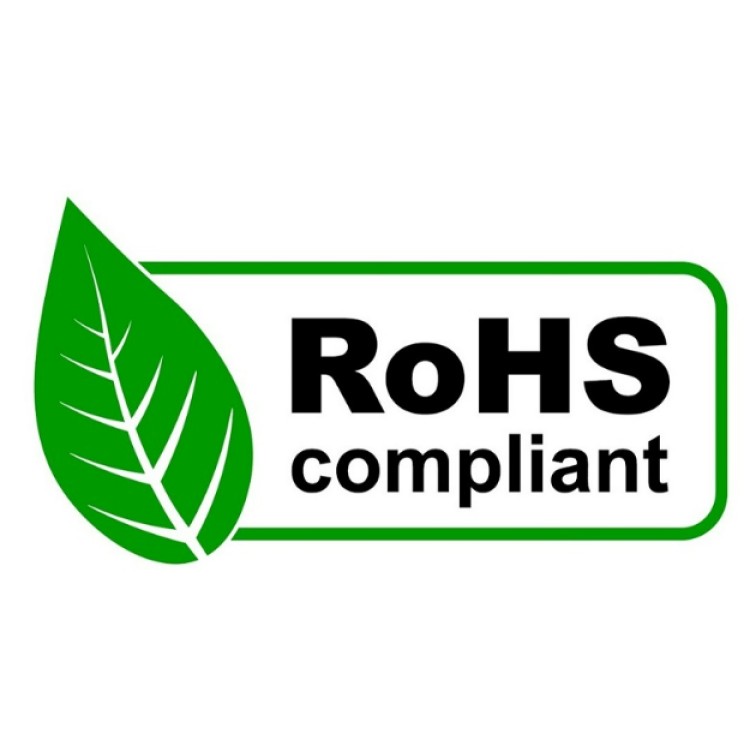金属漆欧洲ROHS认证标准
-
¥500.00
RoHS 2.0新增产品类别
2011年11月30日,欧盟宣布,已开始对2011/65/EU指令(RoHS 2.0指令)的影响评估研究结果的工作。欧盟计划通过研究扩展RoHS 2.0指令的范围,将原先排除在RoHS 1.0指令之外的产品和产品类别包含其中,并据此提出新提案。根据新研究,新指令附件1.0中包含的产品范围将扩大,通过未来的研究和公众咨询还可能进一步扩大。但在迄今发布的产品范围草案中,已包含了需引起出口商关注的产品。
类别1:大型家用电器。包括新产品类别“燃气烤架”、“燃气烤箱”和“燃气加热器”。
类别4:电子消费品。包括新产品类别“具有电器功能的家具”,例如“升降躺床”和“升降躺椅”。
类别7:玩具,休闲和运动设备。包括新产品类别“具有较小电气功能的玩具”,例如“会说话的泰迪熊”和“会发光的鞋”。
类别11:其他电子电器设备。除了“电源开关”和“电动手提箱”外,包括新产品类别“具有电气功能的服装”,例如“加热服装”和“水中会发光的救生衣”。
影响评估研究还包括对如何使符合RoHS指令的有害物质浓度限制规定更可行的分析。已有对限制物质含量的阈值过于严格的关注,尤其是当应用到涂料和非常小的部件的时候。
作为这项研究的一部分,正征询利益相关者的意见,包括遵守指令的花费,如改变产品设计的费用,以及有助于评估减少产品中有害物质浓度带来的好处的数据。意见征询期至2012年4月,2012年7月6日前将发布终报告(包括修订的影响评估)。
适用范围
在人民共和国境内生产、销售和进口电子信息产品过程中控制和减少电子信息产品对环境造成污染及产生其它公害,适用本办法。但是,出口产品的生产除外。
摘要内容
电子信息产品在设计、生产和销售过程中应当符合电子信息产品有毒、有害物质或元素控制国家标准或行业标准,分两阶段施行:
阶段
投放市场的电子信息产品上应标识环保使用期限,标识其中含有的有毒、有害物质或元素名称、含量、所在部件及其可否回收利用等;电子信息产品包装物上,应标注包装物材料名称。可按照标准SJ/T 11363-2006、SJ/T 11364-2006、SJ/T 11365-2006.GB/T 26125-2011的要求进行。
第二阶段
进入管理目录(2010年公布首批三大类:移动用户终端、电话机、与计算机相连的打印设备) 的产品必需确保产品中有毒有害物质已被替代,或含量不超过标准且通过强制性产品认证(CCC认证)
欧盟RoHS体系与中国RoHS体系在具体执行上有不同:欧盟做法是立法禁止电子产品含有六种有害物质,然后列出一系列暂时超标的种类,等以后技术条件成熟了再移出这个目录。中国是反过来的:一旦某个产品技术条件成熟了就放入目录,在目录内的产品是不能超标的。
第三阶段
国推RoHS自愿性认证是指企业自愿申请,通过认证机构证明相关电子信息产品符合相关污染控制标准和技术规范,由国家推行、统一规范管理的认证活动。获证后的认证产品可以加施国推RoHS 认证标志C-RoHS (ABCDE表示认证机构简称),如图《认证标志》所示。
豁免项
豁免项
播报
编辑
简述
由于技术问题,部分材料或者产品的制造技术还做不到ROHS指令要求,在经过向欧盟的特殊申请后,以下项目可以获得豁免(部分豁免是有期限的):
RoHS ExemptionsEU RoHS
Items Exemption Clauses
原有
1 Mercury in compact fluorescent lamps not exceeding 5 mg per lamp
2 Mercury in straight fluorescent lamps for general purposes not exceeding:
- halophosphate 10 mg
- triphosphate with normal lifetime 5 mg
- triphosphate with long lifetime 8 mg.
3 Mercury in straight fluorescent lamps for special purposes.
4 Mercury in other lamps not specifically mentioned in this Annex.
5 Lead in glass of cathode ray tubes, electronic components and fluorescent tubes.
6 Lead as an alloying element in steel containing up to 0.35% lead by weight, aluminium containing up to 0.4% lead by weight and as a copper alloy containing up to 4% lead by weight.
7 - lead in high melting temperature type solders (i.e. lead-based alloys containing 85 % by weight or more lead)
- lead in solders for servers, storage and storage array systems, network infrastructure equipment for switching, signalling, transmission as well as network management for telecommunications
- lead in electronic ceramic parts (e.g. piezoelectronic devices).
8 Cadmium and its compounds in electrical contacts and cadmium plating except for applications banned under Directive 91/338/EEC (1) amending Directive 76/769/EEC (2) relating to restrictions on the marketing and use of certain dangerous substances and preparations
9 Hexavalent chromium as an anti-corrosion of the carbon steel cooling system in absorption refrigerators.
10 Lead used in compliant pin connector systems
11 Lead as a coating material for the thermal conduction module c-ring
12 Lead and cadmium in optical and filter glass
13 Lead in solders consisting of more than two elements for the connection between the pins and the package of microprocessors with a lead content of more than 80% and less than 85% by weight
14 Lead in solders to complete a viable electrical connection between semiconductor die and carrier within integrated circuit Flip Chip packages
15 DecaBDE in polymeric applications
16 Lead in lead-bronze bearing shells and bulbs
17 Lead in linear incandescent lamps with silicate coated tubes
18 Lead halide as radiant agent in High Intensity Discharge (HID) lamps used for professional reprography applications
19 Lead as activator in the fluorescent powder (1% lead by weight or less) of discharge lamps when used as sun tanning lamps containing phosphors such as BSP (BaSi2O5:Pb) as well as when used as specially lamps for diazo-printing reprography, lithography, insect traps, photochemical and curing processes containing phosphors such as SMS (Sr,Ba)2MgSi2O7:(Pb)
20 Lead with PbBiSn-Hg and PbInSn-Hg in specific compositions as main amalgam and with PbSn-Hg as auxiliary amalgam in very compact Energy Saving Lamps (ESL)
21 Lead oxide in glass used for bonding front and rear substrates of flat fluorescent lamps used for Liquid Crystal Displays (LCD)
22 Lead and cadmium in printing inks for the application of enamels on borosilicate glass.
23 Lead as impurity in RIG (rare earth iron gamet) Faraday rotators used for fibre optic communication systems.
24 Lead in finishes of fine pitch components other than connectors with a pitch of 0.65mm or less with NiFe lead frames and lead in finishes of fine pitch components other than connectors with a pitch of 0.65mm or less with coppler lead frames.
25 Lead in solders for the soldering to machined through hole discoidal and planar array ceramic multilayer capacitors.
26 Lead oxide in plasma display panels (PDP) and surface conduction electron emitter displays (SED) used in structural elements, notably in the front and rare glass dielectric layer, the bus electrode, the black stripe, the address electrode, the barrier ribs, the seal frit and frit ring as well as in print pastes.
27 Lead oxide in the glass envelope of Black Light Blue (BLB) lamps.
28 Lead alloys as solder for transducers used in high-powered (designated to operate for several hours at acoustic power levels of 125 dB SPL and above) loudspeakers.
29 Hexavalent chromium in corrosion preventive coatings of unpainted metal sheetings and fasterners used for corrosion protection and Electromagnetic Interference Shielding in equipment falling under category three of Directive 2002/96/EC (IT and telecommunications equipment). Exemption granted until 1 July 2007.
30Lead bound in crystal glass as defined in Annex I (Category 1,2,3 and 4) of Council Directive 69/493/EEC